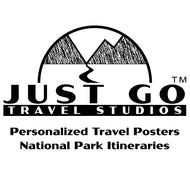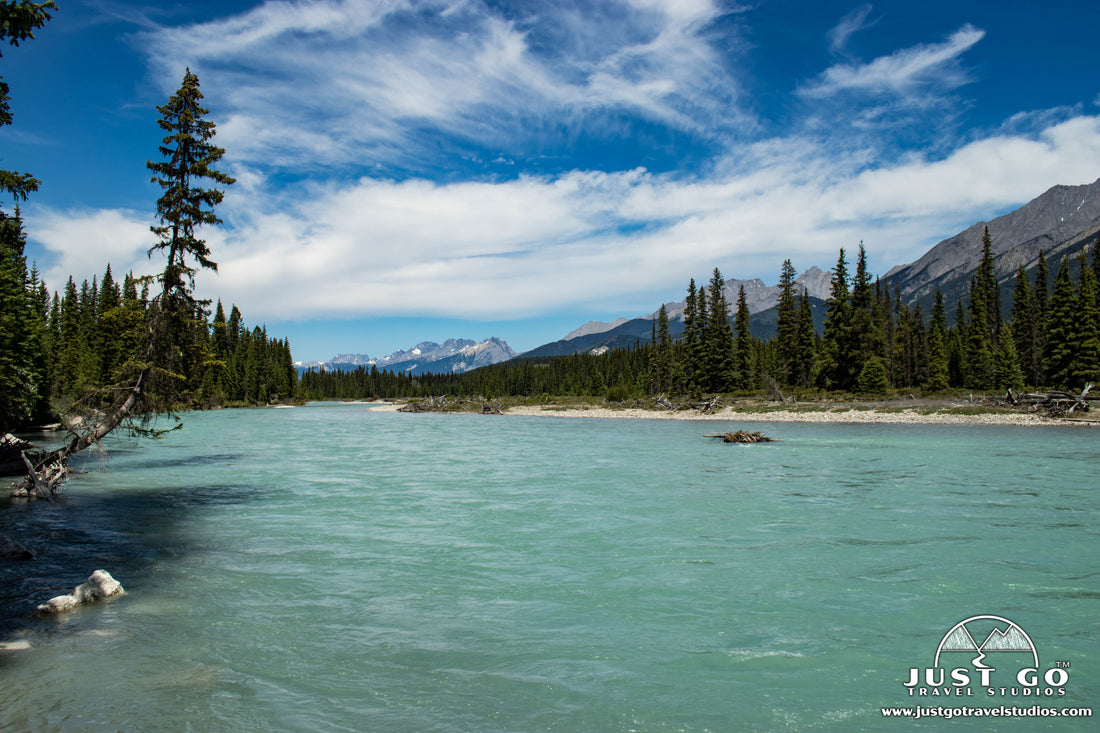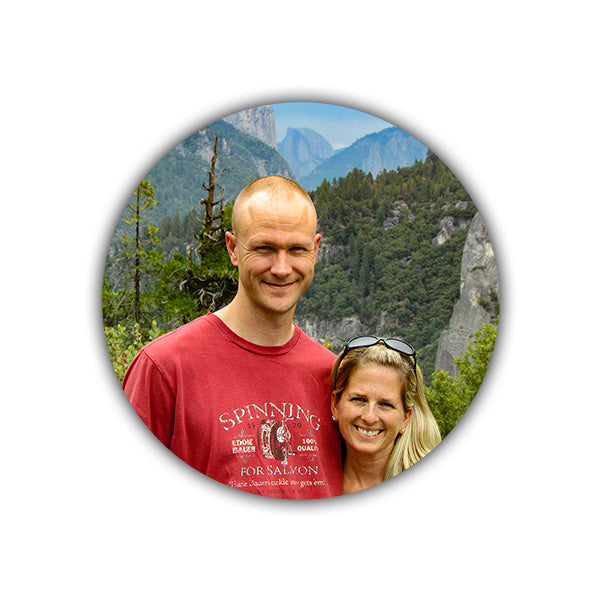Kootenay National Park lies on the British Columbia side of the Canadian Rockies. It was established in 1920 as part of an agreement to build a highway across the Rockies connecting British Columbia with Alberta. The northern section of the park is bordered by popular Banff National Park to the east and Yoho National Park to the north.
Kootenay is a long, narrow park--58 miles long and only about 5 miles wide on either side of the highway. It may to not be the biggest national park in the Canadian Rockies, but its landscape is surprisingly diverse. The park is packed with glacier-capped peaks, semi-arid grasslands, hot springs, mineral pools and a frigid but stunning Kootenay River!
Over 4 million people visited Banff National Park last year, but only approximately 530,000 visitors made the effort to see nearby Kootenay National Park. Kootenay makes a great day trip if you happen to be staying in Banff. Highway 93, the Banff-Windermere Highway, cuts through the center of Kootenay National Park, and pretty much everything you would want to see in a day can be accessed from that main road.
We visited Kootenay National Park during the afternoon on our way towards Banff National Park (having spent the previous day at Waterton Lakes National Park). We entered from the southern end of the park via the Radium Hot Springs entrance and worked our way to the north towards Banff. Whether traveling through or making a day trip from another park in the Canadian Rockies, plan to spend a full day exploring and taking in the sights along the drive!
Here are some recommendations for things to do in Kootenay National Park.
RADIUM HOT SPRINGS AREA (SOUTHERN ENTRANCE)
Radium Hot Springs, commonly called Radium, is a small town located on the south entrance of the park. The village is named for the nearby natural hot springs which visitors to Kootenay National Park can enjoy. We didn’t spend much time in town but enjoyed a quick and delicious lunch at Leo Burrito before heading into the park.
If entering the park via the village of Radium Hot Springs, make sure to stop in at the Kootenay National Park Visitor Centre to pick up brochures and maps and get up-to-date information on trail conditions.
When visiting the Radium Hot Springs area our recommendations include:
Redstreak Restoration Loop Trail
Enjoy this short trail right next to the Redstreak Campground. The gentle, 0.6-mile loop hike passes through open forest and meadows, reborn by prescribed fire, and offers views of the Columbia Valley. If you get lucky, you may even spot some bighorn sheep! Allow about 30 minutes for the walk.
Juniper-Sinclair Canyon
If you enter the park through the southern entrance, you’ll pass through the towering cliffs of Sinclair Canyon. If want to get a closer look, hike the Juniper-Sinclair Canyon Trail. The short, steep hike (3.4-miles out-and-back) along Sinclair Creek offers views of the Columbia Valley and Sinclair Waterfall.
Radium Hot Springs Pools
Relax and soak in a world-famous mineral pool surrounded by the dramatic cliffs of Sinclair Canyon or cool off in the neighboring swimming pool.
I

Olive Lake
Located about 15 minutes from Radium, Olive Lake is a popular day use area for those traveling along Highway 93. Olive Lake is a clear, shallow lake nestled near the Sinclair Pass Summit and is a great location for a picnic lunch or a quick stroll. A short boardwalk trail with interpretive signs leads to two viewing platforms that overlook the lake.

Olive Lake, courtesy of Natalie4267
See the Parks Canada website for more information on other Radium Hot Springs hiking trails.
KOOTENAY VALLEY VIEWPOINT TO NUMA CREEK (CENTER OF THE PARK)
This portion of Highway 93 doesn’t offer much in the way of short, day hikes, but there are plenty of areas along the drive for enjoying a picnic or taking photos of the stunning landscape. Take in the views of the turquoise waters of the Kootenay River winding through the surrounding mountain ranges or dip your toes in the frigid waters.

Keep a lookout for wildlife along the way. We spotted a moose grazing in a marshy area just off the highway!

Kootenay Valley Viewpoint
This roadside viewpoint offers panoramic views of the Kootenay River Valley and the Mitchell and Vermillion mountain ranges.

Dog Lake
This 3.2-mile out-and-back hike crosses two suspension bridges over the Kootenay River and then travels through the forest to a secluded lake backed by the peaks of the Mitchell mountain range. The trailhead can be accessed via the McLeod Meadows Campground.


Kootenay Park Lodge
Located at Vermillion Crossing, this historic lodge and surrounding cabins were constructed by the Canadian Pacific Mountain Railway to offer a rustic mountain experience to the area’s visitors. Today, you can book a cozy cabin for the night, enjoy a home-style cooked meal after a day of exploring or grab a quick bit to eat in the general store. Only open May 10-September 14.
Numa Creek / Numa Falls
Unfortunately, the Numa Falls hike is currently inaccessible. The Numa Creek Trail is closed until further notice due to the loss of the trailhead bridge that crosses the Vermillion River. The Numa Falls Picnic Area was open at the time of our visit, and you can enjoy views of the Vermillion River. However, a fence blocks any further exploration beyond the edge of the swiftly flowing river.


VERMILLION PASS AREA (EASTERN ENTRANCE)
Due to its proximity to Banff National Park, visitors with only a few hours to spare can still experience the beauty of Kootenay National Park from the eastern entrance at Vermillion Pass. Much of the area shows evidence of past wildfires but beauty can be found in the geologic wonders, forest regeneration and wildflowers that cover the forest floor.

When visiting the Vermillion Pass Area our recommendations include:
Paint Pots Trail
An easy walk (1.2-miles out-and-back) leads to mineral springs that are rich in color and history. Cold, iron-rich mineral springs bubble up through three small emerald green pools, staining the surrounding earth a vivid orange color. Indigenous people were the first to discover and use the naturally forming ochre. In the early 1900s, it was commercially mined by prospectors and used to create pigment for paint until the park was established in 1920. You can still see remnants of small mining equipment if you take the trail.
Marble Canyon
This short hike (1-mile out-and-back) is one you don’t want to miss! Multiple bridges cross back and forth over a deep and narrow limestone gorge while the icy, blue glacial waters of Tokumm Creek rush below. Follow the bridges to the thundering waterfall at the end of the trail.
Stanley Glacier
This is one hike we wish we hadn’t missed! The moderate, 5.2-mile roundtrip hike (elevation gain 1,198 feet) is supposed to be one of the best hikes in Kootenay National Park. The trail leads through an area of regenerating forest and follows a creek to the opening of Stanley Basin. View the giant Stanley Glacier clinging to the limestone cliffs. Allow about 3 hours for this hike. If hiking to the foot of the glacier (beyond the maintained trail portion of the hike), the hike is about 6.8-miles roundtrip.
Burgess Shale Guided Hike
If you love to hike and are interested in fossils, reserve a spot on the Burgess Shale hike to the Stanley Glacier fossil site. Hike to the base of Mount Stanley where you’ll find brachiopod, sponge and trilobite fossils older than dinosaurs! This 6.3-mile hike with a 1,476 feet elevation gain is considered moderately difficult (duration of guided hike is about 7.5 hours). See the Parks Canada website for more information and to make a reservation for the Burgess Shale Guided Hike.
Fireweed Trail
Stop at the Vermillion Pass to hike the short, interpretive Fireweed Trail. See what a regenerating forest looks like years after a massive forest fire and learn why forest fires are good for the environment.
Continental Divide
Stand on the dividing line between the Pacific and Atlantic watersheds.
See the Parks Canada website for more information on short hikes and walks in Kootenay National Park or day hikes in Kootenay National Park.
Experienced hikers and backcountry explorers can also find opportunities for longer day hikes and multi-day hikes inside Kootenay National Park.
HOW TO GET TO KOOTENAY NATIONAL PARK AND OTHER TRAVEL INFORMATION
The most common airport to fly into when visiting Kootenay National Park is Calgary, AB (about 2 hours to the east of the park). You’ll pass through Banff National Park on your way. You’ll want to have your own vehicle when exploring Kootenay.
If arriving by car from the southwest (like we did), you’ll travel north on the Kootenay Highway (HWY 95) and pass through the town of Radium Hot Springs.
Make sure you purchase a day pass or Discovery Pass (annual pass to Canada’s national parks) when entering Kootenay National Park. Passes can be purchased at park entrance booths, Parks Cananda visitor centers and online.
TRAVEL TIP: You can travel from one end of the park to the other in under two hours. If staying in Banff, you’ll be traveling in the reverse direction of the stops listed. Plan to leave Banff early in the morning to avoid traffic and to give yourself plenty of time to make stops in the Vermillion Pass area along Highway 93. Pack a picnic lunch to eat at one of many picnic areas or pullouts along the Vermillion River. Then travel to the southern end of the park to explore the Radium Hot Springs area before returning back to Banff.
WHERE TO STAY IN OR NEAR KOOTENAY NATIONAL PARK
While the park is open all year, the major tourist season lasts from June to September.
Kootenay National Park Lodging: The cabins at Kootenay Park Lodge are the only option for lodging inside the park. Reservations are highly recommended and should be made a year in advance for the best chance at reserving a room. Kootenay Park Lodge is located midway into the park and is about 45 minutes from both Banff and Radium Hot Springs.
Banff and Lake Louise Accommodations: Lodging inside of Kootenay National Park is limited, but there are many great accommodation options inside Banff National Park. This includes hotels, B&B’s, cabins and hostels.
Radium Hot Springs Accommodations: If you wish to stay closer to the southern end of the park, the nearest town is Radium Hot Springs. A variety of lodging, dining and recreation options are available in town.
Camping in Kootenay: There are three main campgrounds in Kootenay National Park. Most are open from early May to late September (none are open during the winter). The highest demand is on long weekends and weekends during July and August. Reservations are highly recommended, especially for the Redstreak Campground. See the Parks Canada website for information on campgrounds in Kootenay National Park. Additionally, 10 oTENTiks (part tent, part cabin) are available at Redstreak Campground.
ADDITIONAL INFORMATION ON KOOTENTAY NATIONAL PARK AND THE SURROUNDING AREA
- If you are looking for additional content on Kootenay National Park, check out the blog from 10 Adventures on Things to Do in Kootenay National Park.
RELATED INFORMATION FROM JUST GO TRAVEL STUDIOS
- It’s likely that if you are going to Kootenay National Park that you also up for visiting Banff and Jasper National Parks. Check out our blogs on What to See and Do in Banff National Park and What to See and Do in Jasper National Park for details. You should also check out our blog on Waterton Lakes National Park, which is to the south near Glacier National Park in the U.S.
- Once you return from your trip, contact us and we’ll work with you to create a custom, vintage travel poster. We look forward to working with you!

If you have been to Kootenay National Park and have favorite spots that we didn’t include in this post, please leave a comment or email us directly. We’re also happy to answer any questions that you might have!


